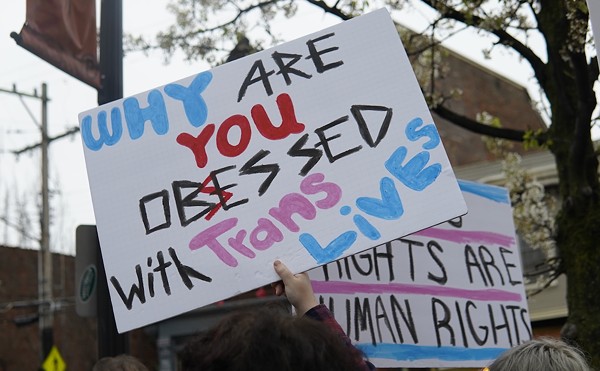|
Call it by the trendy name "private-public partnership," or just call it good business planning. But please don't call a proposed 950-car garage a University of Cincinnati project.
"It's not UC's project," says UC spokesman Greg Hand.
UC doesn't own the land and won't build the garage. But the garage proposed by Hummel Properties II Ltd. — much like the proposed development of Calhoun and McMillan in this week's cover story ("The Evolution of Clifton," page 24) — has UC's fingerprints all over it.
Hummel Properties II hopes to build a parking garage between Clifton Avenue and Stratford Avenue across from the UC campus, requiring eight houses to be demolished. The company is waiting for a decision on variances from the zoning code regarding front and rear yard setbacks and the location of access drives.
If built, the garage will have six attached apartments. That was UC's idea. The apartments will meld into the existing ambience of the street, which also was UC's idea.
The university paid an architect to ensure the front of the garage doesn't clash with neighboring properties. The parking spaces themselves likely will be set aside for UC's use.
"We were approached by a developer who owns the land a few months ago," Hand says. "They were looking for development opportunities and suggested a project. We had some initial discussions with them that helped focus which kind of project they were working on. We wanted to maintain the quality of the neighborhood and suggested adding housing."
Comments by UC officials at a meeting of the Board of Trustees' Physical Plant Committee reveal just how much of a stake the university has in the proposal.
"We want to control the availability of decals and entry to it," says UC Architect Ron Kull. "Whether we physically own the property or don't own the property, we would own the marketing of the access and the decals."
"We are just trying to make sure that it is done correctly," says UC President Joseph A. Steger.
"The general point has been that there has been a longstanding interest in this quadrant of the campus and bringing more parking to that corner and to that edge," says Dale L. McGirr, UC vice president for finance.
To neighbors who say the garage represents an expansion of UC beyond its Clifton Avenue border into the surrounding neighborhood, Hand says the breach occurred 20 years ago.
"We've got a parking lot farther out from this, on Stratford Avenue," he says. "That boundary was breached a long time ago."
Many neighbors oppose the garage, according to Marjorie Klusmeyer, president of Clifton Heights-University Heights-Fairview Neighborhood Association. Fifty-five people signed petitions opposing the project, some citing concerns about exhaust fumes and some concerned about the loss of existing housing.
"Why does our neighborhood have to provide parking for the institution around it?," says Joyce Cissel, 2707 Stratford.
But the neighborhood already provides that service, Hand says, because many students park on nearby residential streets.
"We've got about 40,000 people here and we've got 11,000 parking spaces," he says. "The parkers are out there, and they're going through the neighborhood."
A garage would at least concentrate some of the cars in one place, says David Hummel, managing member of Hummel Properties II.
"The idea basically came from students living in my apartment building, begging for parking spaces," Hummel says. "There definitely is a need for parking."
A decision on zoning variances could come as early as this week, according to Donald Mercer, assistant director of the Safety and Maintenance Division of the Department of Buildings and Inspections. That won't be the project's only hurdle.
"Who knows whether any of the groups want to appeal that?," Hummel says. "It could drag on longer."
Kull told UC's Physical Plant Committee the project could begin in September and be complete within 18 months. But Hummel is skeptical.
"It's still got a long way to go," he says. "We're not going to start tearing buildings down. We've not even begun the major architectural drawings yet." ©





